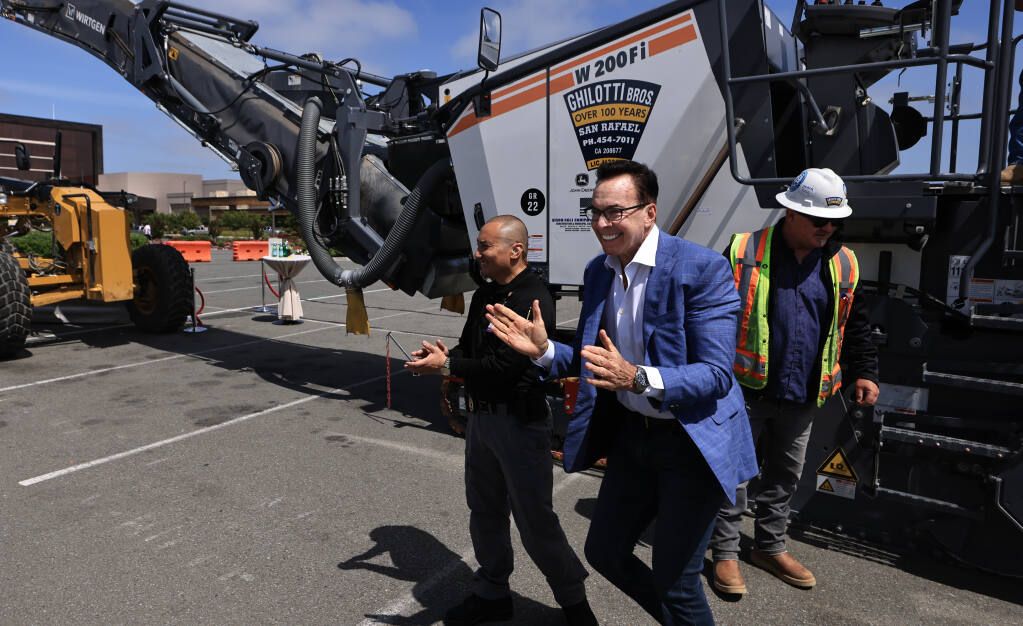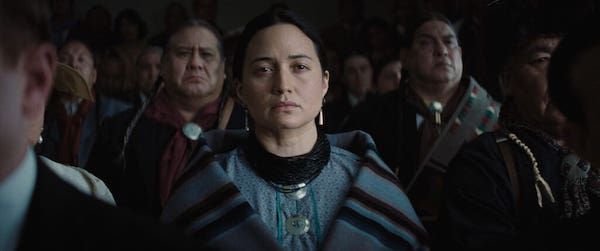“How Did We Get Here?” Federated Indians of Graton Rancheria, Newsletter for July, 2013
February 17, 2021

So often these days people ask me, “How did you do it — how did you get the land into Trust, get a compact signed by the Governor and ratified by the state legislature, raise nearly a billion dollars, and have the largest Indian resort/casino ready to open — all in under three years?”
My first answer is the most obvious one, at least to me: “A lot of love and support from my Tribal Council and my Tribe as a whole.”
The second answer is equally simple but warrants more discussion: “Think ahead.” When you think ahead, you can anticipate any roadblocks to getting what you need. Ask yourself, what do I need to accomplish? Then ask, what do I have to do to accomplish the things I want? Once I am clear about what I need to accomplish, I can anticipate what or who might get in my way. Then I must honestly ask if I can realistically overcome the obstacles. Is there anyone who can help me? Is there anyone who might have similar goals who can help me?
In order to build a casino/resort, we needed to have our land “put into Trust” by the federal Government; that is, the land needed to be deemed by the Department of Interior as a reservation. Remember that having Trust land was never originally for the purpose of a casino or resort, but land that was owed to us after illegal termination of our original Rancheria in 1958. Trust land was always to be our land with which we could take care of ourselves. In our case, our restoration legislation, passed by an Act of Congress, and signed by President Clinton on December 27, 2000, mandated that the Department of Interior “restore lands” to the Federated Indians of Graton Rancheria, as a result of the fact that as a Tribe we were illegally terminated and lost Trust land originally given to us in 1922.
The problem now was how to get the land into Trust and how to pay for it. Well, we had an investor (Station Casinos) who put up the money (which we must pay back) so we could pay for land. The problem, amidst a sizable public opposition to our land being put into Trust, was how to get the land put into Trust. Think ahead. Ask who could help us. Ask who might benefit from our project. Then get their support. We’ve always said we wanted a project that would benefit Indian and non-Indian alike. One of our goals for the casino/resort was for us to have enough money to restore and protect the natural environment. One of our goals was to help make our community safer. Thus, we sought out allies in the larger community with the same goals — environmentalists, lawmakers, many individual citizens (i.e., Friends of the Graton Rancheria) — who might work with us and support us as we navigate the very complicated and often contentious paths to the establishment of Trust status, that is, to a positive decision by the Department of Interior on our particular land of choice, our present land in Rohnert Park, which is square within our aboriginal territory. As you know, we met our goal — with the help of allies — on October 1, 2010.
Now the state compact. We needed the support of the City of Rohnert Park and Sonoma County. We already had a legal and binding Memorandum of Understanding (MOU) with Rohnert Park — an MOU that guaranteed the city a good amount of money once the casino/resort is open. And we had already advanced money to the city against that same MOU. So we had the city in our corner. We did not have an MOU with the county, but we knew that we could be really good neighbors and help the County, not only in what monies we could offer as mitigation for the impacts of the casino, but as a gift for the causes that so many in the county and this Tribe hold dear, namely the restoration and preservation of the environment and the welfare of all American Indian people in the county. Here’s the thinking ahead: Why not ask the Governor if we could give a bulk of the money back to the county (instead of the state) for what the Tribe and the County cherishes, and thus, create a win-win for everyone involved. The Governor, being a good and generous man — and in the wake of the Rincon Decision by the Supreme Court, stipulating that the state cannot put revenue share funds into its General Fund — agreed and saw our suggestion here as creative and a model of tribes working well with their larger communities for the benefit of all. The result: a precedent-setting compact from the Governor that was ratified by the state legislature in record time.
With a compact, we could now raise money — and raise money we did, because, as several bankers back east said to me, “It’s clear you think ahead. It’s clear you look ahead and find ways to solve problems. That’s the sign of a good business.”
“And,” I answered, “of a good and stable Tribe.”
Now, more than ever, we must think ahead. We have a huge business to protect. We will have money to invest. We have a future that we must guarantee for our children and grand-children. Too often, because of poverty and social circumstance given our ugly history with colonization, we have not had the luxury to think ahead. We have had to think only “now” — food now, clothes now, shelter now, and protection for our children now. The “now thinking” has become a part of who we are. There are benefits to “now thinking.” Street smarts, for one; we learn to live with our eyes open, watchful for how we can get what we need now. But, at the same time, we must learn to “think ahead”, how to think for a future that can surely be ours — yes, ours, perhaps for the first time since the Europeans entered our lands. Think ahead in your families. Value education, for education can help prepare us for the future. School can be difficult; but, if you are truly thinking ahead, you will be able to see how the sacrifices you make in school now can help all of us in the future.
In the May 27, 2013 issue of The New Yorker, Elizabeth Colson noted that “carbon-dioxide levels have exhibited a pattern [since the 1950’s] that started out as terrifying and may be now described as terrifyingly predictable. They have increased every year, and earlier this month [May, 2013] they reached the milestone of four hundred parts per million. No one knows exactly when CO2 levels were last this high; the best guess is the mid-Pliocene, about three million years ago. At this point, summertime temperatures in the Arctic were fourteen degrees warmer than they are now and sea levels were some-seventy-five feet higher.”
It won’t be long, in other words, before we begin to see even more radical environmental changes (witness the recent unprecedented storms and weather patterns). Imagine what the eyes of our children will see! What to do? Think ahead. We may not be able to stop impending environmental disaster, but we can make changes in how we live, where we invest our time and money, and thus provide a model that at least counters prevailing environmental patterns. It’s clear that whoever owns the resources — water, good, farmable land — will be in the best position not only to survive, but, at the same time, be in a position of control regarding the food and water for others. Think ahead: invest in local natural resources. Land and water.
We can do this, folks. We’ll have the financial resources to own the natural resources. In the broadest and best sense possible, we can be “keepers of the land” once again, and, this time, keep our position.
Let’s hope there is a future. Let’s hope that when someone asks one of our grandchildren, “How did you do it — how did your ancestors come out on top again and provide a model for all of us to live?” They can answer, “Our Tribe thought ahead.”
© Greg Sarris 2013
All Rights Reserved


